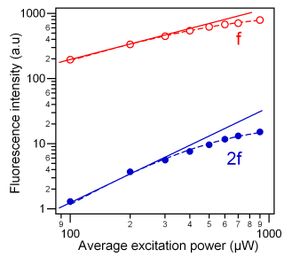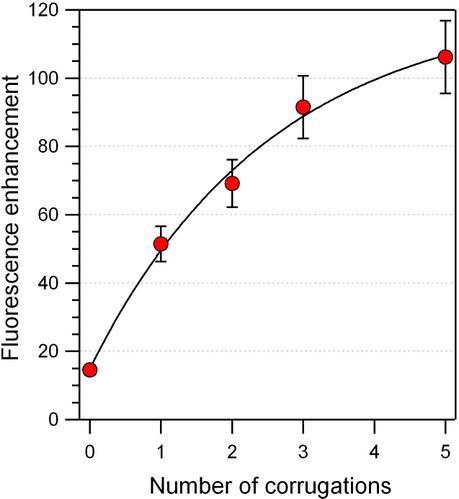recent research work
Several PhD & PostDoc Positions Nano-Opics
The Institut Fresnel is a research state laboratory based in Marseille / France, devoted to research and higher education in all areas of optical and photonic sciences. The Institut Fresnel is seeking to recruit talented, enthusiastic young scientists who are highly motivated to boost their research career in the areas of nano-optics and/or biophotonics. See the general call webpage here.
DONE - POSITION FILLED PhD ExtendFRET : Extended fluorescence energy transfer with nanophotonics
DONE - POSITION FILLED PhD Twins : Theoretical / numerical research in plasmonics and optical antennas
STILL OPEN PhD NanoVista : Nanophotonics inside CMOS biosensors
DONE - POSITION FILLED PostDoc ExtendFRET : Plasmonic circuits design & simulations
DONE - POSITION FILLED PostDoc Twins : Design of optical antennas for enhancing light-matter interaction at the nanometer scale
DONE - POSITION FILLED PostDoc NanoVista : Enhanced detection of single fluorescent molecules with plasmonic antennas
STILL OPEN PostDoc / Contractual Researcher ExtendFRET : Förster resonance energy transfer & surface chemistry



Latest article: analyzing fluorescence
Fluorescence is a powerful and versatile method that is widely used in several scientific fields. However, when it comes to analyze the origin of a given fluorescence signal (i.e. calibrating the excitation intensity, the number of emitters and their respective quantum yield), fluorescence spectroscopy is intrinsically limited, as it is unable to separately quantify the excitation intensity from the number of fluorescent emitters. This may cause severe misinterpretation of experimental results as soon as complex systems are used, such as plasmonic metal substrates or scattering media. The range of application is large, from bioassays to microscopy imaging.
We address this issue in a recent Optics Letters publication by monitoring higher-order harmonic fluorescence signals upon harmonic excitation modulation. To our knowledge, this is the very first method able to quantify the excitation intensity and the number of emitters separately. It is a significant supplement to the fluorescence toolbox. The method is compatible with a wide range of observations, and relatively simple to implement. This opens new characterization routes for applications on surface-enhanced fluorescence bioassays, microscopy across scattering samples, and deep tissue fluorescence imaging.


ERC Starting Grant Project Funded !!

Project Name : ExtendFRET = extended FRET with plasmonics
Duration 60 months
Expected starting date November 2011
Surface-enhanced fluorescence with corrugated nanoapertures
Subwavelength apertures milled in metallic films are receiving a growing interest to tailor light at the nanoscale, and improve the detection methods of single molecules.
In an article published in the July 04th issue of Optics Express, we quantify the influence of the number of circular corrugations surrounding a central nanoaperture to further enhance the fluorescence emission per molecule. This work has three aspects of general interest:
1) We quantify both the excitation and emission gains contributing to the fluorescence enhancement, providing the first complete characterization of corrugated apertures as the number of corrugations is increased.
2) We demonstrate efficient single molecule detection with fluorescence rates clearly above 10,000 counts/second with a simple low NA lens.
3) We show that a single groove milled around a nanoaperture already provides a supplementary 3.5 fold increase in the fluorescence enhancement as compared to a bare nanoaperture. This constitutes the first experimental observation of the effect numerically predicted in Bonod et al, Optics Express 16, 2276-2287 (2008).


Latest article : fluorescence directional sorting with antennas
Despite intense recent research on optical antennas, tuning the directionality of fluorescence emission remains an open challenge for emitters with random positions and orientations. We address this issue in a recent Nano Letters report, and propose a class of optical antennas to control the fluorescence emission directivity for molecules in solution.
Following on our previous article “Bright Unidirectional Fluorescence Emission of Molecules in a Nanoaperture with Plasmonic Corrugations” by H. Aouani et al (Nano Lett. 2011, 11, 637–644), new scientific findings are now described and analyzed:
1) We describe new design paths for plasmonic antennas to tune the emission directivity based on physical optics interference concepts. This manuscript provides the first complete characterization of the interference phenomenon leading to fluorescence beaming, both experimentally and theoretically.
2) The key result is that for each emission wavelength the fluorescence beam can be directed along a specific direction with a given angular width. For the first time, we demonstrate directional photon sorting between emission beams of spectrally different molecules.




